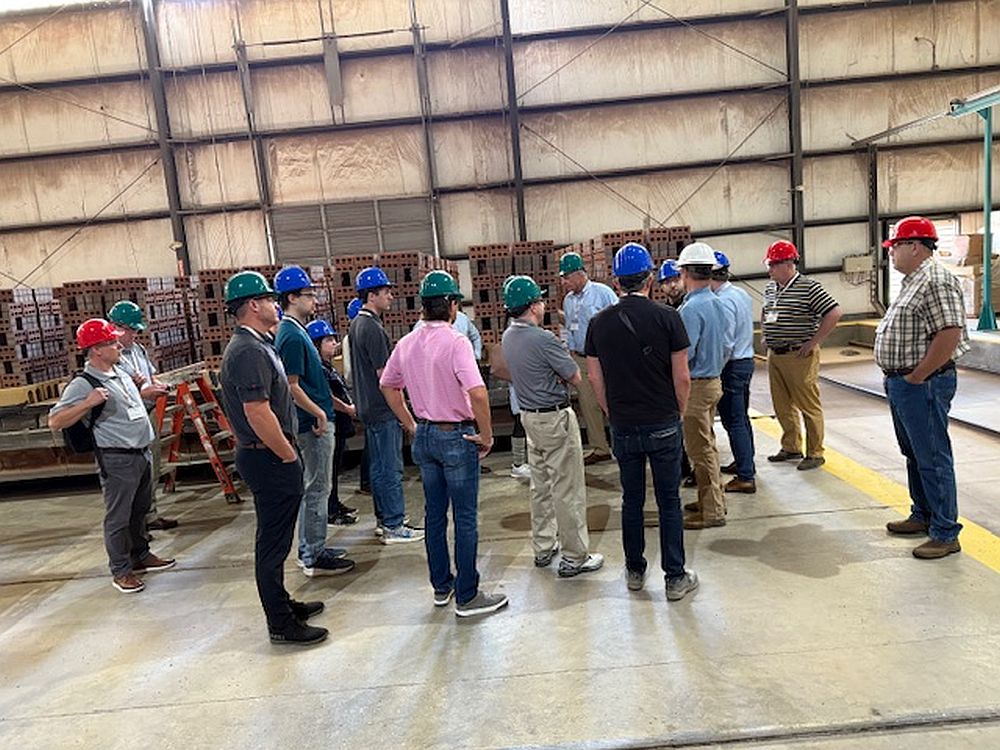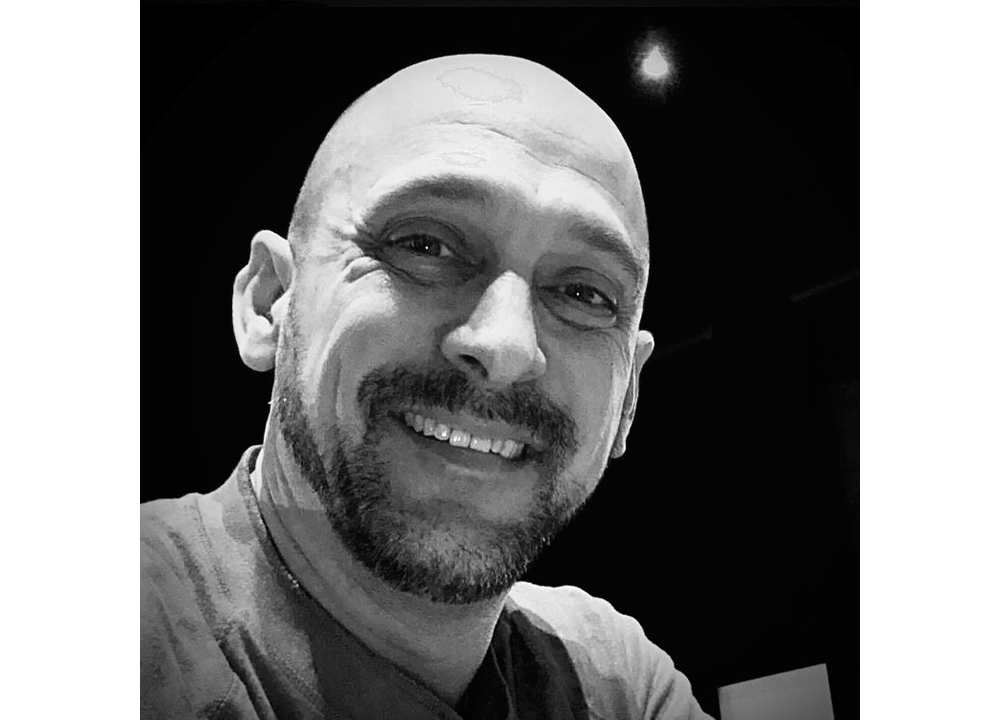
[Image above] ACerS President’s Council of Student Advisors held their annual business meeting on the Friday and Saturday before ACerS Annual Meeting at MS&T23. This year’s delegates reflect the diversity of the larger membership, with students coming from eight countries. Credit: ACerS
When Edward Orton, Jr. and his colleagues founded The American Ceramic Society in 1898, they likely did not anticipate how integrated the global market economy would become during the 20th century. Yet the Society kept pace with these rapid advancements every step of the way, and 125 years later, about 35% of ACerS’ membership call countries outside the United States home.
ACerS celebrated its global history during its 125th Annual Meeting at the 2023 Materials Science & Technology technical meeting and exhibition, held October 1–4 in Columbus, Ohio.
MS&T is an annual event cohosted by The American Ceramic Society; The Minerals, Metals & Materials Society (TMS); and the Association for Iron & Steel Technology (AIST). This year, more than 2,600 people from 36 countries converged in Columbus for the conference, including more than 610 students and more than 1,200 exhibit-only attendees.
As with last year, the MS&T partners collaborated with commercial exhibition firm Event Partners to sell and manage the full exhibition at MS&T23. Event Partners also organized The Advanced Materials Show commercial exhibition within the conference, which featured two days of talks focused on technology showcases and graphene applications, respectively.
“Being able to celebrate 125 years of ACerS with so many members, both domestic and international, in the Society’s hometown was a gratifying experience,” says Mark Mecklenborg, ACerS executive director. “We look forward to continuing the growth of our global impact and strengthening our engagement with our international members and other materials societies.”
Below are highlights from ACerS 125th Annual Meeting at MS&T23.
ACerS announces launch of ACerS International branding
In recognition of ACerS’ significant global membership, outgoing ACerS president Sanjay Mathur announced a new branding initiative during the Annual Business Meeting on Monday, Oct. 2.
The new brand extension, ACerS International, will be used to increase awareness of how ACerS serves the scientific and technological needs of the global ceramic and glass community outside the United States. International activities and collaborations will feature the ACerS International logo, as well as ACerS International Chapters.
Mathur emphasized that neither the name of the Society nor its logo will change. Rather, the ACerS International brand extension is a subset of The American Ceramic Society “that allows us to better serve the global community.” More information about the new ACerS International branding initiative can be found on the ACerS website at this link.

In the same vein as the new ACerS International brand, incoming ACerS president Rajendra Bordia said that he plans to focus on enhancing the value of membership during his year in office.
I want to “express my heartfelt gratitude” for this opportunity, Bordia said during the Annual Meeting.
His approach to accomplishing this goal is to listen, plan, and then execute initiatives with support from members throughout the Society. He is currently in the listening stage, he says, and welcomes emails with ideas from the membership.

Award lectures imagine a technology-driven, sustainable world
The increasing frequency and severity of both natural and anthropogenic hazards in recent years has intensified the urgency to develop new technologies and processes that reduce our environmental impact. Many of the award talks at this year’s Annual Meeting highlighted some of the ways that ceramic and glass scientists can help society embrace sustainability.
The award talks started on Monday morning with the Arthur L. Friedberg Ceramic Engineering Tutorial and Lecture, given by University of Alabama at Birmingham professor Kathy Lu. She described the maturation of polymer-derived ceramic technology, which allows for difficult-to-synthesize ceramics, such as silicon carbide, to be created using far less energy than traditional methods.
On Tuesday morning, Clemson University professor Kyle Brinkman delivered the biannual Navrotsky Award for Experimental Thermodynamics of Solids lecture on the potential of crystalline hollandite materials as a nuclear waste form, in contrast to today’s common glassy waste forms. This year’s Cooper Scholar recipient, student John Bussey of Washington State University, also talked about cleanup of nuclear waste, specifically salt formation and detection in nuclear waste glasses.

University of Jena professor Lothar Wondraczek delivered the Cooper Session Distinguished Lecture on the atomic structure and properties of some emerging glass systems, such as metal-organic framework glasses, which have potential for application in gas separation and solid electrolytes, among other devices.
On Tuesday afternoon, University of Tennessee Knoxville Weston Fulton Professor Sergei V. Kalinin delivered the Edward Orton Jr. Memorial Lecture on the “rise of autonomous science.” He discussed how artificial intelligence-based computational and analysis techniques can accelerate the development of materials discovery while reducing the need for trial-and-error experiments, thus preserving resources.
Also on Tuesday afternoon, Ohio Aerospace Institute chief scientist Mrityunjay Singh delivered the Rustum Roy Lecture on additive manufacturing, which has the potential to help preserve resources during manufacturing as well.
On Wednesday afternoon, Carnegie Mellon University Teddy and Wilton Hawkins Distinguished Professor Elizabeth Dickey delivered the Robert B. Sosman Lecture on using defects to improve the functionality of electronic ceramics.
New this year, the Bioceramics Division organized an awards session that featured several award recipients, including
- University of Connecticut Albert and Wilda Van Dusen Distinguished Professor of Orthopedic Surgery Cato T. Laurencin, who delivered the Larry L. Hench Lifetime Achievement Award on regenerative engineering and bioceramics.
- Sterlite Technologies lead materials science and engineering scientist Saurabh Kapoor, who delivered his own award lecture, the Global Young Bioceramicist Award, as well as the Tadashi Kokubo Award lecture for Ashutosh Goel, professor at Rutgers, The State University of New Jersey, who unfortunately was unable to attend the conference. Goel was Kapoor’s mentor during his Ph.D. studies.
- University of Louisville post-doctoral research fellow Srimanta Barui, who delivered the Bioceramics Young Scholar Award lecture on bioceramics binder jetting.

CGIF launches new IGNITE MSE program for students
In addition to the usual student programming at ACerS Annual Meeting, the Ceramic and Glass Industry Foundation launched a new program called IGNITE MSE.
IGNITE MSE focuses on professional development and career exploration for undergraduate and graduate students. It will run in conjunction with selected conferences affiliated with The American Ceramic Society.
The debut of IGNITE MSE at MS&T23 involved a professional development symposium on Monday morning, followed by a popular career panel luncheon—standing room only!—and a meet & greet in the ACerS lounge. Featured IGNITE MSE posters appeared during the larger poster session on Tuesday, and a hot glass and networking reception took place at Glass Axis on Wednesday evening.
The next IGNITE MSE program will take place at ICACC 2024.

Networking events and ACerS 125-year Afterglow celebration
ACerS Annual Meeting at MS&T23 offered numerous networking opportunities for students and professionals, including the Diversity in Science reception and LGBTQ+ and Allies Networking Mixer, both on Sunday night.
On Monday evening, following ACerS Annual Honor and Awards Banquet, the Society held an Afterglow reception to celebrate ACerS’ 125 years. The event featured a magician and dueling pianists.

Visit the ACerS Flickr page for more photos from ACerS Annual Meeting at MS&T23. Pictures from the Awards Banquet will be available soon. Next year, ACerS 126th Annual Meeting at MS&T24 will take place in Pittsburgh, Pa., from October 6–10. We look forward to seeing you then!
Author
Lisa McDonald
Spotlight Categories
- Meeting Highlights
- Society News


